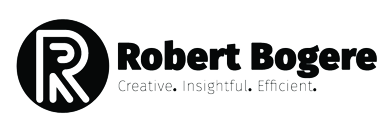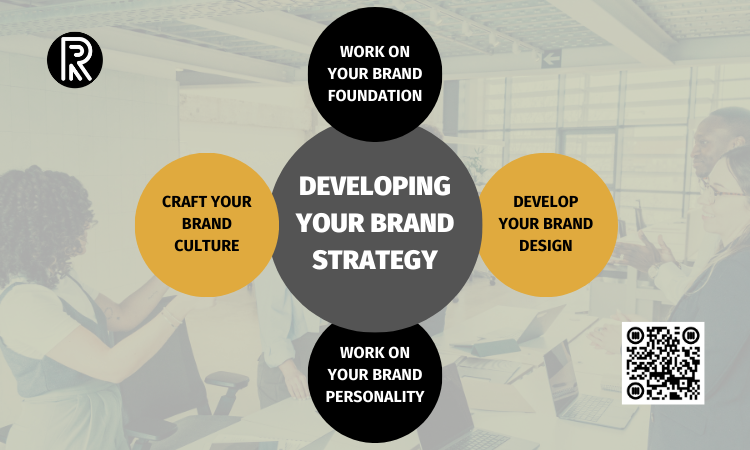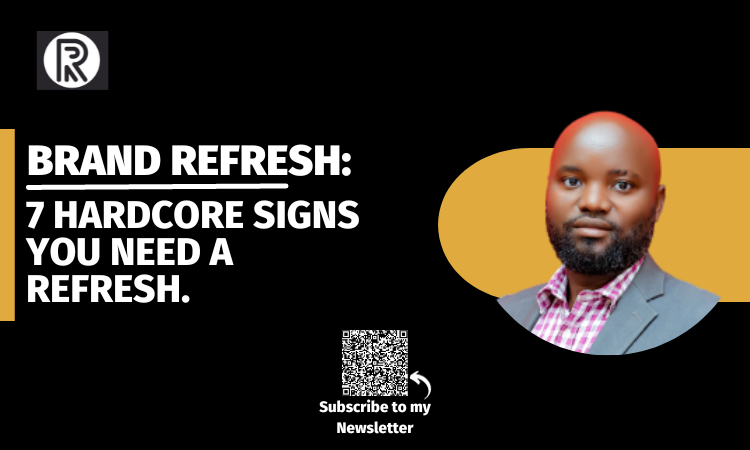Last Updated on Mon-Sep-2024 by Robert Bogere
Embarking on the exciting journey of DIY branding tools and guide feels like becoming both the strategist and artist of your business story, where each creative move is like painting your path.
In the days when I worked for startups with tight budgets, I stumbled upon the exciting idea of crafting a brand independently—a journey fueled by creativity and strategic thinking.
In an era of choices, creating your brand without breaking the bank isn’t merely a practical option; it’s a personal journey for those who enjoy unleashing their creativity.
In this article, you’ll explore the tools and techniques that transform DIY branding from a mere cost-saving concept into a method to craft a distinctive brand that narrates your story and resonates with your target audience.
Discover: How you can develop your brand strategy
What is DIY branding?
It is the process of branding your business on your own rather than outsourcing the task. Instead of hiring a professional for such work, you take it upon yourself without external assistance.
The significance of DIY branding tools and guide lies in cost savings, especially for startups or small businesses on a tight budget. If you possess creative and critical thinking skills, why not undertake such tasks and begin developing an impressive brand?
DIY branding Tools
Developing your strong and eye-catching brand doesn’t require you to break the bank. In this digital era, there are many free and paid DIY branding tools you can use to develop your visual identity and other marketing materials for your brand.
Remember, humans recognize visuals more than texts. If you’re a business founder or owner working on a budget, developing your brand doesn’t need to be a daunting task. You can develop a brand that’s loved and attractive to your target audience. The below tools are not in the right order.
1. Word Press
For a brand to allure its target audience, a well-developed and appealing website is essential. Without it, visibility is compromised.

Operating on a limited budget, WordPress provides an opportunity to design and launch a foundational website. While not the sole popular tool, it stands out as one of the user-friendly platforms hosting numerous websites for diverse brands.
Notably, it enables seamless integration with over 1000+ plugins, including SEO, blocks, table of contents, analytics, etc.
2. Canva
Canva stands as a design platform that aids in crafting visually appealing content for both online and offline presence, catering to both amateurs and professionals alike.
Canva offers both free and paid plans. The free plan, equipped with a drag-and-drop editor, proves notably beneficial, granting access to over 1 million free photos and graphics.

Opting for a Canva paid subscription empowers you to develop a brand-centric kit for promoting brand identity.
Noteworthy, 85% of Fortune 500 firms employ the Canva design tool (Source: Fortune). Among these firms are notable names such as Zoom, Salesforce, Coca-Cola, McDonald’s, Meta, etc (Source: Canva).

3. Coolors
Are you seeking a distinctive color palette for your brand? Coolors is the fitting tool that generates your customized color palette and identifies the color blends you require.

Using Coolors allows you to choose color palettes and apply them consistently across your visual elements online and offline, ensuring brand cohesion across all touchpoints and materials.
4. Hatchful
Developing and establishing a brand is incomplete without a logo. If you’re at the logo design stage, Hatchful is a solution for overcoming logo challenges.

It facilitates the design of logos from scratch or using pre-designed templates. Simply enter your business name, and the logo generator crafts an impressive design instantly.
Additionally, you can explore a plethora of logos customized to your business, enabling you to find a design that suits your brand.
5. Pixlr
Pixlr serves as a straightforward and user-friendly free photo editing tool for web developers seeking aesthetically pleasing images for websites.
Notably, it allows the creation of new photos or the editing of existing ones. Equipped with fundamental tools expected from a standard photo editor program, Pixlr empowers you to develop premium-looking visuals for your website.

According to Pixlr, it has maintained its position as the top web-based photo editing service over the last 15 years.
Their commitment to pioneering innovation in online capabilities remains steadfast, ensuring the delivery of excellent retouching, drawing, filtering, and effect tools. Moreover, Pixlr’s pricing plans are affordable for startups and small businesses.
6. Vista Create
Vista Create stands as another excellent free graphic design tool suitable for new startup businesses or personal projects.
Particularly advantageous for digital marketers, it boasts a diverse range of templates, the capability to schedule social media posts across multiple channels, and an integrated kit for managing colors, fonts, and logos.

A brand kit is essential for maintaining brand consistency. Vista Create provides a 30-day free plan, after which users can opt for paid plans. Pricing is user-based, making the solution cost-effective for solopreneurs but potentially expensive for larger companies.
7. Tailor Brands
For brand owners lacking essential design skills, Tailor Brands is a noteworthy logo maker and one of the best tools for non-designers.
Simply input your business name, and the tool generates a variety of logos and fonts for selection, a process taking only a few minutes.

Following your selection, the tool proceeds to create logo designs based on your choices, offered in unique styles such as Icon, Name, and Initial Base.
If satisfied with the generated designs, you can download them in your preferred format. For those desiring more customization, the tool allows adjustments in terms of text, colors, etc.
Accessing high-resolution logo files requires a sign-up, providing additional benefits like resizing your logo in different dimensions, access to a graphic design tool, stock photos, icons, and an AI-driven website developer.
8. Visme
In the past two years, I’ve had the opportunity to use the Visme tool, and every time, I’ve experienced a threefold improvement in developing various content.
With my limited knowledge in graphic design, my dedicated efforts have paid off, prompting me to write this article to acquaint you with a tool you can utilize even with limited or no experience in designing visual content.

Visme stands out as one of the most recommended and affordable design tools, offering less-used templates. It provides various design package plans, ranging from basic to Visme with the team’s offer.
Consider opting for their PRO plan, which includes unlimited projects, 3GB storage for your brand assets, premium assets, and templates.
It offers a variety of download formats, including JPG, PNG, PDF, PPTX, HTML5, Video, and GIF, at only $24.75/month, billed annually with a discounted offer.
Their free plan has limitations, such as the inability to access premium assets and templates, and your designs will carry the Visme logo.
For you serious about elevating your brand, the PRO package is recommended. What sets Visme apart from other design tools is its offering. With an annual plan, you also receive six (6) free months.
DIY branding resources for creative assets
Research indicates human brains process images 60,000 times faster than text. Striking images play a crucial role in capturing attention and effectively conveying your message.
For brand owners, founders, freelancers, etc., interested in a DIY approach, it’s essential to know where to access visual materials for your business.
1. Vecteezy
This resource offers a variety of high-quality free online photos. Using these photos comes with the benefit of being able to search and filter them by color, contrast, orientation, style, number of people, age of models, and more.

An added advantage is the provision of signed model and property releases for all free photos, safeguarding you from potential legal liabilities. Notably, their team consistently review each photo submission for quality.
2. Unsplash
Unsplash is a source with an extensive database of high-resolution photos, particularly beneficial for content marketers and bloggers. Notably, Unsplash allows you to download your selected images in various sizes.

3. Pexels
I cannot overlook Pexels, as I have also benefited from their photos. Pexels boasts a vast collection of well-organized curated online free photos.
An added advantage with Pexels is the availability of free stock videos, making it a go-to photo source for many bloggers.

This resource offers a plethora of free images suitable for websites and other purposes, all available free of charge. With an extensive array of stock photos, you can easily find images that resonate with your brand and vibe.
Step-by-step DIY branding guide for solo, startup, and small businesses
Given you’re new to the marketplace, branding holds significant importance for your business. Faced with budget constraints, startups often seek cost-effective strategies to navigate potential challenges.
With this in mind, consider implementing do-it-yourself strategies. While DIY branding guide and tools may initially seem daunting due to the work involved, embarking on this process requires addressing key elements, as outlined below:
Learn: How you can define your brand positioning statement
1. Conduct your market research
Your initial step in developing suitable materials involves conducting research. This necessitates a thorough examination of your competitors:
- Who are they?
- How do they present themselves to the public?
- What colors do they use?
- How do they present themselves to the public?
The objective is to avoid duplicating the appearance of your competitors. Your research guides decisions on what to retain, what to avoid, and how to differentiate from competitors.

Seize this opportunity to anticipate and address challenges as your competitors would. Imagine establishing your business with identical colors, fonts, and elements as your competitors—it would be like copying them.
Furthermore, research on your target audience is imperative. This ensures the development of an identity and products that resonate with your customers.
Thankfully, tools like Google Trends, SEMrush, etc., facilitate this research. Additionally, employing online surveys helps you stay updated on evolving preferences.
2. Define your purpose and clarity for your business
Before delving into other aspects, answer key questions to gain clarity about your business:
- What is the core purpose of my business?
- What values does it uphold?
- Why does my business exist?
- What sets it apart?
- What are the strengths and weaknesses?
- What opportunities and threats exist?
- Which strategies are most effective at this stage of my business?

When you answer the above questions, you’ll get more clarity about your business. Your next thing should be setting objectives and goals for the business. It’s advisable you link your overarching goals with the core values of your business.
Discover: How to craft your brand values
3. Craft your brief brand strategy for your business
At this stage, develop essential components of your brand strategy, including mission, vision, values, tagline, and positioning statement.
In DIY branding, you invest time rather than money to brainstorm diverse ideas for a proper brand identity.

Leveraging the answers from the earlier questions, brainstorm ideas to formulate a mission statement—an expression specific to your company’s internal functions, ideology, purpose, market prospects, and competitive advantage.
The mission statement serves to inspire and motivate your company’s employees. Ensure alignment with long-term goals. Repeat the same process to craft your vision.
4. Determine your target audience
Identifying your target audience is a fundamental aspect of branding. Crafting offers without understanding your target customers is challenging, as customers are the foundation of any business.

Based on the answers to your earlier questions, create a customer profile and collect data on how your brand is performing in the market. Ensure you deliver the value to your customers.
5. Align your goals with your values
In contemporary times, customers prefer relatable brands. Adding value to your brand distinguishes it, making it noticeable to your target audience.

Your values define what your business believes in, aid in achieving long-term goals, attract loyal customers and justify premium prices.
Distinct values reflecting your company’s character influence your target customers and enhance their overall experience. Avoid generic values; listing generic words lacks meaningful impact.
6. Develop your visual identity
After finalizing your brief strategy, transition to crafting your visual identity, a crucial aspect that enables customers to recognize your brand. Initiate the creation of your logo, assuming you’ve already chosen your color palette, elements, fonts, context, etc. Consider the following when designing your logo:
- Simplicity
- Memorability
- Scalability
- Timelessness
- Evergreen Appeal

7. Add your brand assets to digital and print materials
In this final stage, with your designed assets ready, proceed to test their appearance across various applications such as apparel, websites, letterheads, business cards, etc.
Evaluate the suitability of your chosen colors for your business. If needed, employ reverse engineering tactics—make necessary changes or improvements until they align seamlessly with all your materials. Testing your designs before the official launch is advisable.
Balancing DIY with professional input
If you’re operating on a budget, DIY is an excellent option. If you are dedicated, you can successfully manage it yourself using the various tools mentioned.
However, as your business grows, it is advisable to plan and allocate a budget for professional services such as hiring a strategist and designer.
Professionals are essential for creating a compelling brand that attracts loyal customers. While it’s acceptable to launch your brand with a DIY visual identity, having a professional by your side is beneficial.
Creating your visual identity can be time-consuming and may divert your attention from other critical business tasks. This distraction could result in costly mistakes that have the potential to harm your brand.
The common pitfalls of DIY branding
1. Neglecting your target audience
If you’ve chosen the DIY route, it’s crucial to avoid focusing solely on your interests. Set aside your personal preferences and concentrate on understanding your customer’s interests, wants, and needs.

Remember, your brand isn’t about you; it’s defined by what your customers perceive. In essence, you aren’t in control of your brand; your customers are.
It reflects what they want, like, need, and resonate with. If uncertain about their needs, conduct further research. Consider questions such as:
- What does their future look like?
- How old are they?
- What does their daily routine entail?
- Which social platforms do they frequent?
- What is their income and educational background?
Having answers to these questions will guide the development of your customer persona, aiding in targeting such customers effectively.
2. Using elements that don’t reflect your brand
Crafting elements is not about creating whatever you desire. Instead, it requires clarity about your brand to develop elements that align with and reflect your brand.
To accomplish the above, your mission, vision, personality, and values must already be established. If they aren’t, take the time to define and set them, as they form the foundation of your brand.
Your mission should address questions such as: Why does your brand exist? Who is it for? How will it improve their lives?
3. Personality and values
Nowadays, personality plays a crucial role. Remember, you already have a distinct personality. Consider transferring your personality traits to your brand, as customers prefer relatable brands.

These days CEOs are leveraging social media to build their personal brands. Establishing a strong presence both online and offline contributes to business revenue growth.
Consider the personality of your brand—is it innovative? Friendly? What values does it uphold?
Additionally, it’s crucial to identify what matters to your brand. What values do you prioritize? Are you environmentally conscious? What are your core concerns?
4. Lack of brand consistency
If you opt for the DIY approach, ensure consistency where applicable. Avoid using an excessive array of colors and fonts—limit yourself to a few colors (ideally 1-3) and a minimal selection of fonts (1-2).
Avoid confusing your customers, as rectifying such issues in the long run can be time-consuming and costly. Building trust is vital for customers, and consistency is a key element.
5. Lack of experience
When undertaking DIY branding, the absence of sufficient experience may result in poorly executed brand assets that fail to represent your brand effectively in the market or resonate with your target audience.
Discover: The critical suicidal branding mistakes to avoid
DIY branding conclusion
DIY branding is a blend of cost-saving and intelligent decision-making. As you try tools like WordPress, Canva, and Visme, remember your brand’s identity is more than visuals; it’s like narrating a story.
During my tenure working with startups on tight budgets, the prospect of creating their brands was exciting—it was a mix of creativity and ingenuity.
While undertaking tasks independently is commendable, striking a balance with professional assistance when possible is wise.
In this mix of self-reliance and expert guidance, ensure your brand not only garners attention but also forms a profound connection with your target customers, becoming a visual story that stays in their minds.
Enjoy the process of crafting your brand, witnessing it evolve into a narrative that showcases your unique ideas and affirms your role as a smart entrepreneur.




